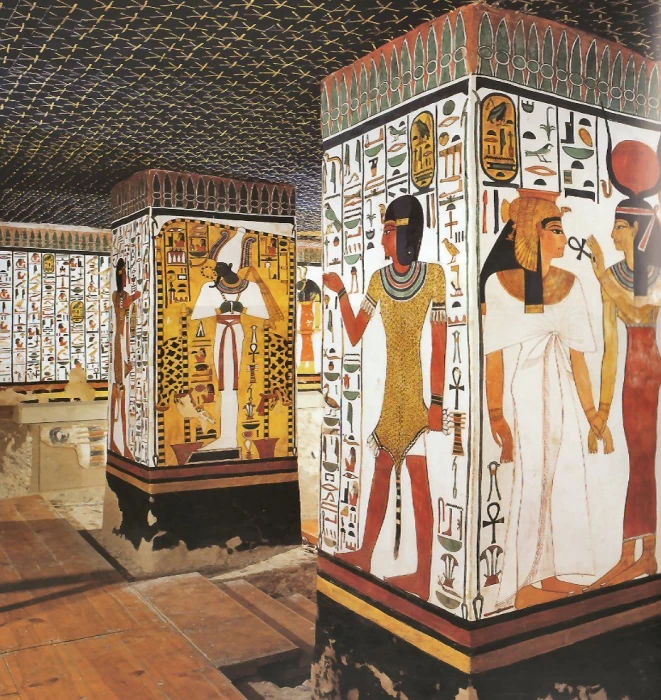
Tomb of Queen Nefertari
Tomb of Queen Nefertari
Nefertari's tomb is one of the creations of historical monuments built by the kings of the ancient Egyptian dynasties and became international archaeological attractions that are visited by tourists coming from different countries of the world to enjoy these interesting stories from inside the temples.
The historical tombs in Luxor are clustered within the city of Qurna in the Western Mainland, and the most wonderful of them is “Nefertari's Tomb” No. 66 in the Valley of the Queens in the Western Mainland, which belongs to King Ramses II's wife Nefertari, who said in love with her: - (She is the one for whom the sun rises), which despite the passage of thousands of years since its discovery in 1904 by the Italian expedition led by the scientist Yekiaparelli, retains the colors and inscriptions at the height of accuracy and splendor, as these inscriptions cover more than 520 meters of the tomb to impress all world guests during their visit.
Nefertari, who lived for 50 years in the period (1300-1250 BC), was married in her youth to Prince Ramses II at the age of 14, who also built the Abu Simbel temple for her, and carved two large statues for her among his statues, and she was often represented on the statues of King Ramses II in Luxor and Abu Simbel Temple, explaining that Nefertari's tomb was characterized by the beauty of the inscriptions, their accuracy, the skill of photography, the use of bright colors, and showing the beauty, tenderness and elegance of Queen Nefertari.
The tomb consists of 7 chambers and a long corridor, and from the main room there is a corridor that ends with a rectangular room, while at the end of the first room there is a staircase that leads to the coffin room consisting of four pillars and three small rooms in the center of the hall, stressing that the tomb was discovered in 1904, and was not opened to the public until the early 1990s, due to some damage to the inscriptions and decorations due to salt deposition.
Queen Nefertari married Prince Ramses II before he took over the rule of the country and gave birth to 6 children, including Prince Amun Har Khabsh Av, and Princess Meret Amun, and Nefertari appeared in many great scenes, perhaps the greatest honor she received is her unique tomb in the Valley of the Queens in Thebes, and she also has a small temple in Abu Simbel, and in her last years Queen Nefertari's health declined, so her place was taken by her daughter Meret Amun, a favorite of King Ramses II.
The city of Luxor has undergone civilizational changes over the ages through the convergence of scientists and researchers from different cultures to discover the secrets of the Pharaonic civilization, explaining the work of uncovering the tomb of the beautiful Nefertari and its restoration by archaeological missions that included leading scientists and archaeological researchers.














